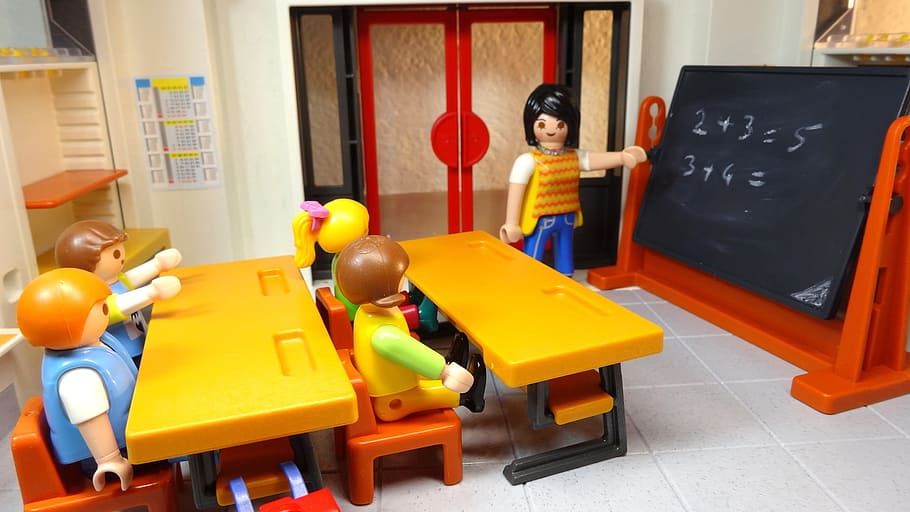Rock & Roll Your Teaching StyleBy ISJL Education Fellow Ava Gadon
As teachers, it can be easy to get stuck in a rut. By the time any teacher has taught a few lessons, patterns emerge. This can be on purpose to give the students a sense of consistency or regularity. However, it can also be accidental, and instructors may not realize that it is occurring. A lot of the time we get used to teaching from our own perspective as learners or default to the quickest way of getting through the material even if that is not the way it would be absorbed the best for the class. Going into the new year, we get an opportunity to break out of our comfort zones. Here are some ideas for effective ways to change up our teaching styles! Using Your Resources There are so many resources available to teachers. Therefore, there is no reason to limit oneself to conventional resources available to religious school programs. With some time and guidance, anyone can find lots of new ideas to spice up their teaching. It might be helpful to join a Facebook group or follow a blog—Jewish or secular—for new ideas and collaborative space with other teachers. Another idea is to reach out to other teachers within the school to discuss specifics relating to the needs of the community. The ISJL is always here to brainstorm too! Checking in with education directors is also a productive tool. They might be able to access trainings or resources that you do not know about. As supervisors and experienced professionals, they also can provide feedback on our teaching. Constructive criticism can be one of the most useful tools to improving in anything, and while asking for and accepting it is not always pleasant, it may point out areas to improve in that we did not see ourselves. Taking Baby Steps While we all are excited to take risks and improve classroom experiences, it is important to make changes slowly and with intention. Making too many adjustments to lesson planning or teaching styles can make keeping it up overwhelming and can lead to reverting to old patterns. It can also be confusing for students, so be methodical when implementing changes. Dealing with transitions always produces anxiety. While daunting at first, little changes are a first step in energizing both teacher and student. Instituting a few small changes like adding more kinesthetic activities or setting aside time during the week for lesson preparation can make an impact on how the classroom feels. There is no need to make multiple changes simultaneously! Baby steps will work just fine. Involving Your Students Who better to ask for input in classroom development than students? Potential questions an educator can pose to classes are if they want more or less time devoted to certain activities, or what topics the group would like to learn more about. By communicating directly with students, we make them feel more involved in their learning. Additionally, by taking students’ opinions seriously, we expand our own horizons and investment. The older the students, the easier the conversation can be, but even with little ones it can definitely be worth a try. Overall, setting some resolutions for ourselves as teachers can be a great way to start the year off on a better foot. Whether a new teacher or a seasoned professional, breaking out of comfort zones as a teacher can help bring more energy into the classroom and spark interest among students. Just remember that we do not have to make big changes to have a big impact, and we always have support! |
- Home
- WHO WE ARE
-
WHAT WE DO
- PODCAST
- Conference >
- Education >
-
CULTURE
>
- Culture Overview
- Cultural Programming >
-
History
>
-
Encyclopedia of Southern Jewish Communities
>
- Alabama Encyclopedia
- Arkansas Encyclopedia
- Georgia Encyclopedia
- Florida Encyclopedia
- Kentucky Encyclopedia
- Louisiana Encyclopedia
- Mississippi Encyclopedia
- North Carolina Encyclopedia
- Oklahoma Encyclopedia
- South Carolina Encyclopedia
- Tennessee Encyclopedia
- Texas Encyclopedia
- Virginia Encyclopedia
- Encyclopedia Credits
- Oral History
-
Encyclopedia of Southern Jewish Communities
>
- SPIRITUALITY >
- DONATE
- Shalom Y'all
- Strategic Plan
- Southern & Jewish Blog
- Calendar
- Virtual Press Kit
|
©2024 Goldring/Woldenberg Institute of Southern Jewish Life
|

